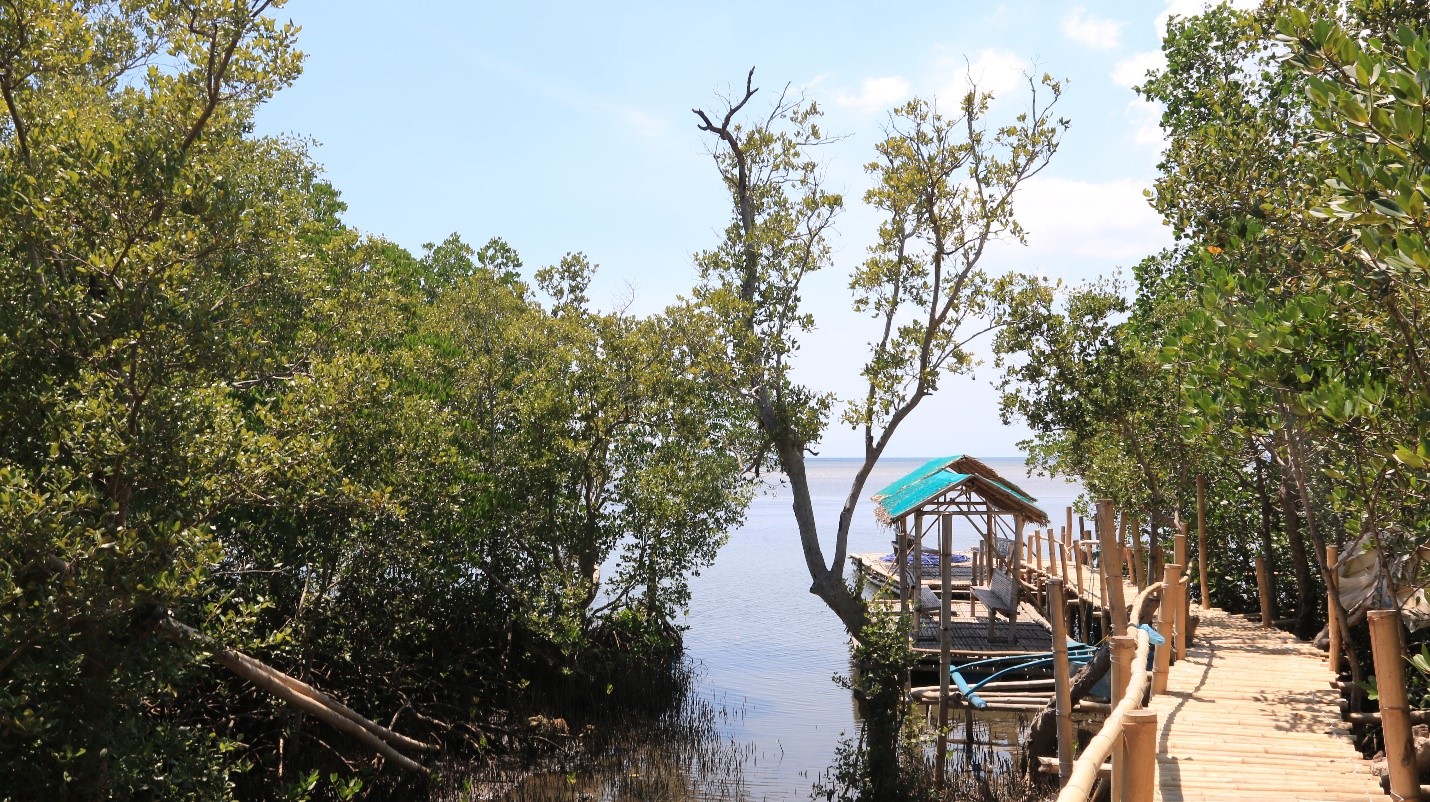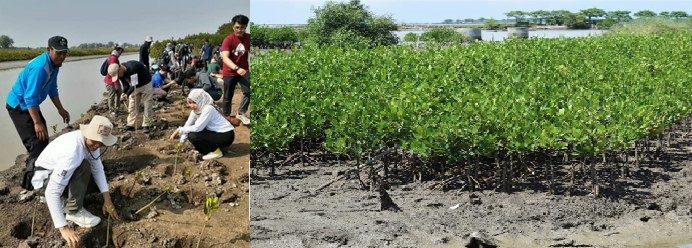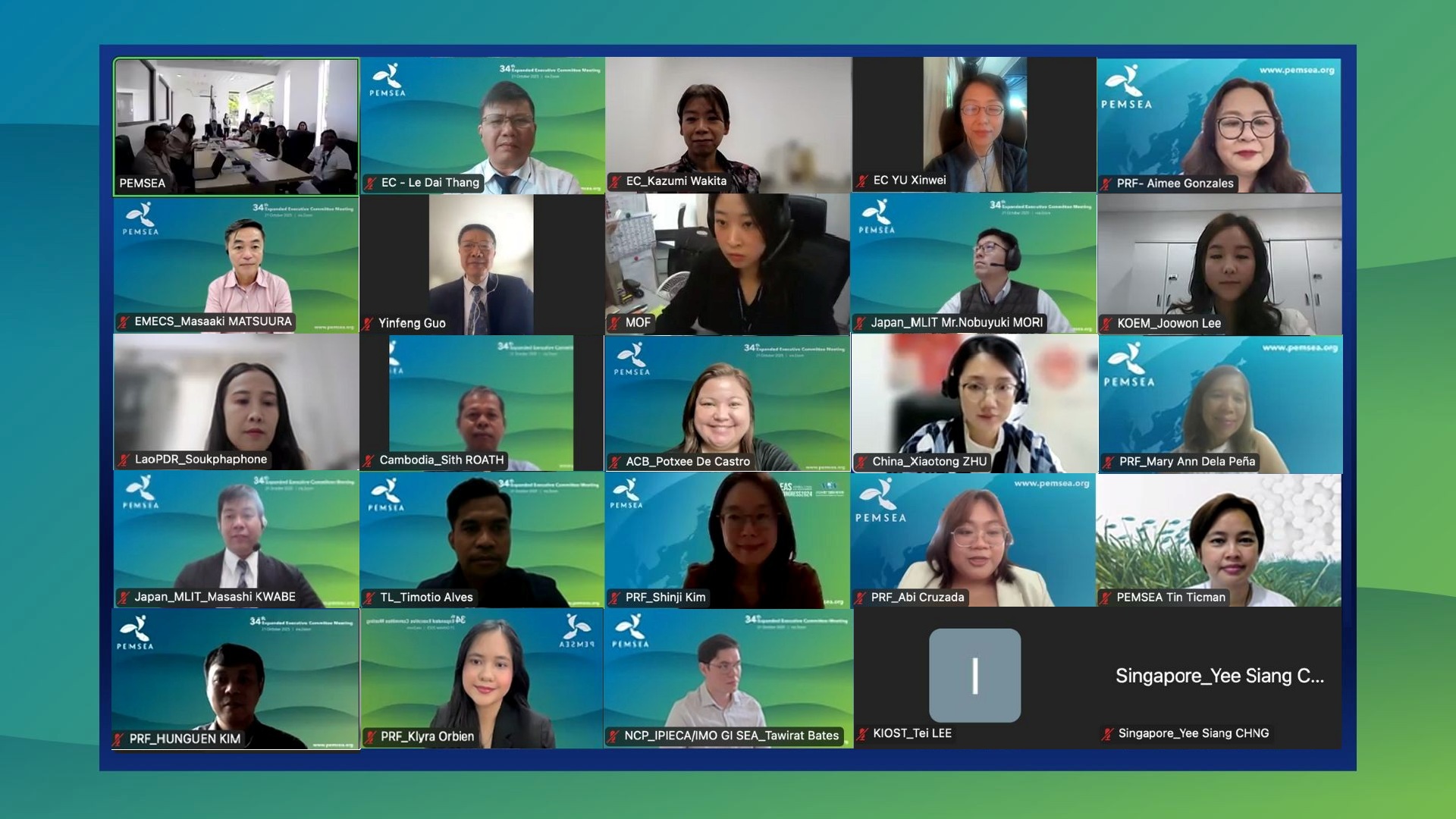Strong Interest Drives Push for Blue Carbon Projects Across EAS Region
Tuesday, 27 August 2024

Ang Pulo Mangrove Sanctuary in Batangas, Philippines (Photo by PEMSEA)
Blue Carbon Ecosystems (BCEs) are increasingly seen as vital assets for achieving climate goals and pushing for sustainable development worldwide. These ecosystems, including mangroves, seagrass meadows, salt marshes, seaweed beds, and tidal flats are gaining recognition for their roles in carbon sequestration and climate regulation. This growing acknowledgment is fueling a surge in Blue Carbon (BC) projects across the region, emphasizing their potential in mitigating climate change and supporting sustainable practices.
A recent PEMSEA survey participated by 20 ICM learning sites and/or members of the PEMSEA Network of Local Governments across six countries shows that a variety of BC projects are making headway, focusing on conservation, research, monitoring, restoration, and participation in the carbon market.
In particular, restoration projects are among the most prevalent, as sites like Guimaras, Philippines and Jakarta, Indonesia focus on establishing mangrove nurseries essential for replenishing coastal ecosystems. Mangrove planting and reforestation efforts are also ongoing in several provinces in the Philippines, such as Bataan, Batangas, Guimaras, and Jakarta and Tangerang in Indonesia, Manatuto, Timor Leste, and Preah Sihanouk, Cambodia.
On the conservation front, dedicated seagrass protected areas have been established in Batangas and Manatuto. Mangrove conservation projects are also underway in Guimaras and Batangas, Tangerang, and Changyi, China where efforts are being made to conserve tidal flats.

The sites expressed strong interest in development of potential BC projects across the region particularly in BCE restoration, conservation, management, followed by assessment, with emerging interest in more advanced areas like carbon crediting and trading.
Koh Kong, Cambodia expressed interest to explore BC markets to improve their mangrove conservation and restoration efforts. All of the sites expressed the need for technical assistance and capacity building to improve ecosystems and habitat protection, management and restoration.
Status of BCEs
The survey confirmed that BCEs are considered important ecologically, economically, and socially, but are threatened by various anthropogenic activities for the region. Despite being actively managed and supported by various legal and regulatory frameworks, significant gaps remain in effective management and enforcement of these sites.
For instance, mangrove forests face ongoing threats from logging, pollution, and illegal activities. Despite these pressures, they play an important role in local economies through fisheries and tourism and benefit from management efforts led by government and international organizations, which provides opportunities for future conservation and restoration. Seagrass meadows are similarly threatened by pollution, coastal development, and climate change.
These habitats, vital for biodiversity and supporting industries like fisheries, tourism, and aquaculture, are managed mainly through Marine Protected Areas, Integrated Coastal Management mechanism, Locally Managed Marine Areas, or Other Effective area-based Conservation Measures.
Salt marshes in China, offer substantial economic benefits through aquaculture, tourism, and salt production. Seaweed beds and tidal flats, though less studied, show potential for significant contributions to carbon sequestration and coastal resilience.
Despite increasing efforts to manage and protect BCEs, challenges still persist, particularly in governance and enforcement. Fragmented governance, stakeholder disputes, and inadequate law enforcement continue to affect progress.
Compounding these issues are severe capacity and resource constraints—ranging from insufficient monitoring and enforcement to financial and manpower limitations. The effects of invasive species, coastal development, environmental and climate change also threaten these ecosystems by disrupting carbon storage and biodiversity.
Lastly, data and knowledge gaps also stymie effective policymaking and support for BCEs, as insufficient information and awareness limit data-driven policies and public backing. To address these challenges, the survey respondents indicated the importances of improving governance, resource management, and boost public awareness and engagement.
Future directions
Apart from the extensive potential of mangrove forests and seagrass meadows, BC projects in the region also present opportunities in salt marshes, seaweed beds, and tidal flats. These often-overlooked areas warrant further study to fully understand and gauge their potential.
Moving forward, efforts should prioritize the restoration and conservation of BCEs at key sites. Developing expertise in carbon crediting and trading through partnerships with established international, regional, and national entities will be essential for maximizing both the economic benefits and effectiveness of these initiatives.
For more information on the results of the survey, please check out the report.



